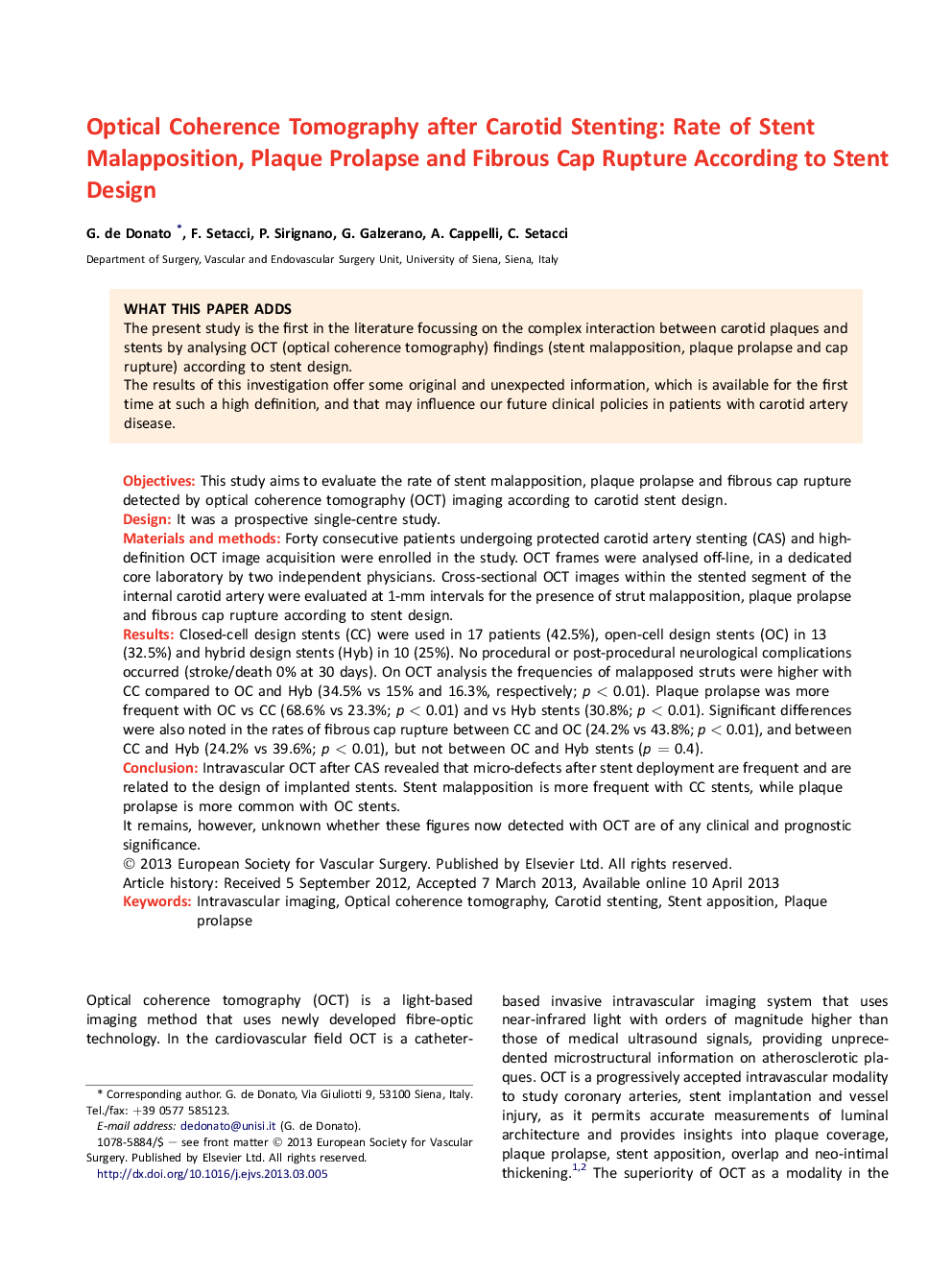| کد مقاله | کد نشریه | سال انتشار | مقاله انگلیسی | نسخه تمام متن |
|---|---|---|---|---|
| 2912444 | 1575465 | 2013 | 9 صفحه PDF | دانلود رایگان |

ObjectivesThis study aims to evaluate the rate of stent malapposition, plaque prolapse and fibrous cap rupture detected by optical coherence tomography (OCT) imaging according to carotid stent design.DesignIt was a prospective single-centre study.Materials and methodsForty consecutive patients undergoing protected carotid artery stenting (CAS) and high-definition OCT image acquisition were enrolled in the study. OCT frames were analysed off-line, in a dedicated core laboratory by two independent physicians. Cross-sectional OCT images within the stented segment of the internal carotid artery were evaluated at 1-mm intervals for the presence of strut malapposition, plaque prolapse and fibrous cap rupture according to stent design.ResultsClosed-cell design stents (CC) were used in 17 patients (42.5%), open-cell design stents (OC) in 13 (32.5%) and hybrid design stents (Hyb) in 10 (25%). No procedural or post-procedural neurological complications occurred (stroke/death 0% at 30 days). On OCT analysis the frequencies of malapposed struts were higher with CC compared to OC and Hyb (34.5% vs 15% and 16.3%, respectively; p < 0.01). Plaque prolapse was more frequent with OC vs CC (68.6% vs 23.3%; p < 0.01) and vs Hyb stents (30.8%; p < 0.01). Significant differences were also noted in the rates of fibrous cap rupture between CC and OC (24.2% vs 43.8%; p < 0.01), and between CC and Hyb (24.2% vs 39.6%; p < 0.01), but not between OC and Hyb stents (p = 0.4).ConclusionIntravascular OCT after CAS revealed that micro-defects after stent deployment are frequent and are related to the design of implanted stents. Stent malapposition is more frequent with CC stents, while plaque prolapse is more common with OC stents.It remains, however, unknown whether these figures now detected with OCT are of any clinical and prognostic significance.
Journal: European Journal of Vascular and Endovascular Surgery - Volume 45, Issue 6, June 2013, Pages 579–587